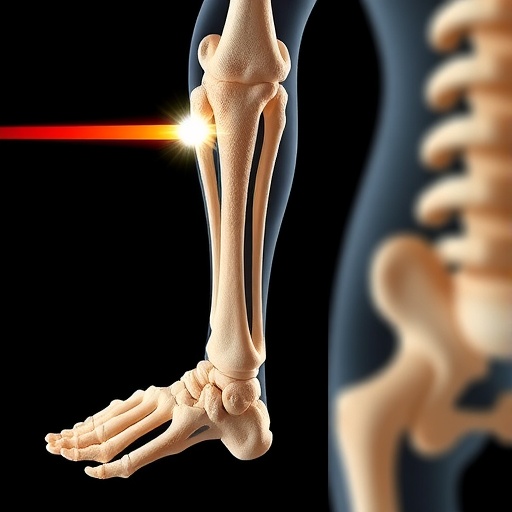Washington, DC, October 4, 2018 – First suicide attempts are more lethal than previously realized, reports a study of children and adolescents published in the Journal of the American Academy of Child and Adolescent Psychiatry (JAACAP).
Seventy-one percent of youth dying by suicide did so on their first attempt, also known as the "index" attempt; the authors also found that firearms are implicated in 85 percent of youth dying on first-attempt.
"Suicide is a major public health problem affecting American youth and is the second most common cause of death for those between the ages of 10 and 24 years old," said lead author Alastair McKean, MD, a child and adolescent psychiatrist at Mayo Clinic in Rochester, Minnesota, USA. "Our findings show the high lethality of index attempt suicides in youth and their close relationship to firearms. This combined with the fact that index suicide attempts are often the first intersection with mental health care is very concerning. Future prevention efforts need to focus on youth before they make their first attempt."
The findings are based on a study from the Mayo Clinic in Rochester, Minnesota, which drew upon the Rochester Epidemiology Project (REP), a database of medical records and autopsy reports that stretches back to the 1960s. Results from the REP have been shown to be generalizable to the United States as a whole. The total cohort for this analysis included 1,490 subjects, of whom 813 were youth aged 10-24 years.
In the subsample of youth, 3.6 percent of youth died by suicide during the study period. Though males only comprised 31.7 percent of index attempts in youth, they accounted for almost 80 percent of the suicide completions. Firearms were heavily implicated in suicide completions accounting for 85 percent of index attempt deaths. Prior mental health concerns were absent from the records in 41.2 percent of youth index attempters. Comparison between the youth and overall cohort found that a higher percentage of youth had a lethal index attempt.
This study may have significant implications for efforts to reduce suicide in youth, highlighting the limitations of current approaches that seek to provide interventions following an initial episode of unsafe behavior. Given that most successful suicide attempts will occur without a prior attempt having occurred, a substantial portion of youth will have had no prior contact with mental health services at all.
###
Notes for editors
The article is "Rethinking Lethality in Youth Suicide Attempts: First Suicide Attempt Outcomes in Youth Ages 10 to 24," by Alastair J.S. McKean, MD, Chaitanya P. Pabbati, MD, Jennifer R. Geske, MS, and J. Michael Bostwick, MD (https://doi.org/10.1016/j.jaac.2018.04.021). It appears in the Journal of the American Academy of Child and Adolescent Psychiatry, volume 57, issue 10 (October 2018), published by Elsevier.
Dr. McKean is a child and adolescent psychiatrist and assistant professor of psychiatry in the Division of Child and Adolescent Psychiatry at the Mayo Clinic in Rochester, Minnesota. He is the psychiatry clerkship director for the Mayo Clinic School of Medicine and his clinical activities include telepsychiatry and inpatient care for children and adolescents. The focus of his research endeavors are in psychiatric epidemiology and suicide in both children and adults.
Copies of this paper are available to credentialed journalists upon request; please contact Mary Billingsley at [email protected] or +1 202 587 9672. Journalists wishing to interview the authors may contact Mayo Clinic Media Relations, Mayo Clinic, 200 First Street SW, Rochester, MN 55905 at [email protected] or +1 507-284-5005.
About JAACAP
Journal of the American Academy of Child and Adolescent Psychiatry (JAACAP) is the official publication of the American Academy of Child and Adolescent Psychiatry. JAACAP is the leading journal focusing exclusively on today's psychiatric research and treatment of the child and adolescent. Published twelve times per year, each issue is committed to its mission of advancing the science of pediatric mental health and promoting the care of youth and their families.
The Journal's purpose is to advance research, clinical practice, and theory in child and adolescent psychiatry. It is interested in manuscripts from diverse viewpoints, including genetic, epidemiological, neurobiological, cognitive, behavioral, psychodynamic, social, cultural, and economic. Studies of diagnostic reliability and validity, psychotherapeutic and psychopharmacological treatment efficacy, and mental health services effectiveness are encouraged. The Journal also seeks to promote the well-being of children and families by publishing scholarly papers on such subjects as health policy, legislation, advocacy, culture and society, and service provision as they pertain to the mental health of children and families. http://www.jaacap.org
About Elsevier
Elsevier is a global information analytics business that helps institutions and professionals advance healthcare, open science and improve performance for the benefit of humanity. Elsevier provides digital solutions and tools in the areas of strategic research management, R&D performance, clinical decision support and professional education, including ScienceDirect, Scopus, SciVal, ClinicalKey and Sherpath. Elsevier publishes over 2,500 digitized journals, including The Lancet and Cell, 38,000 e-book titles and many iconic reference works, including Gray's Anatomy. Elsevier is part of RELX Group, a global provider of information and analytics for professionals and business customers across industries. http://www.elsevier.com
Media contact
Mary Billingsley
JAACAP Editorial Office
+1 202 587 9672
[email protected]
Media Contact
Mary Billingsley
[email protected]
202-587-9672
@elseviernews
http://www.elsevier.com
http://dx.doi.org/10.1016/j.jaac.2018.04.021




